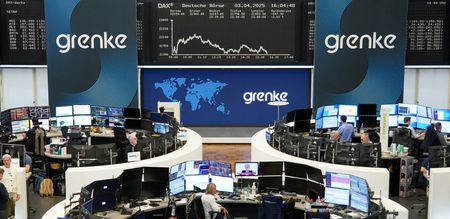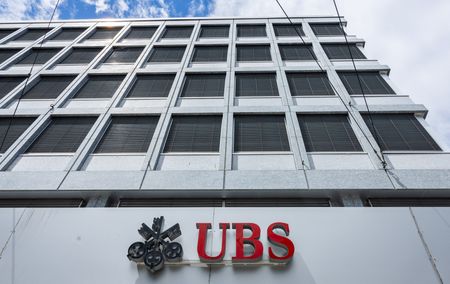By Naomi Rovnick
LONDON (Reuters) -Investors who rushed out of Wall Street during a month of U.S. policy shocks that raised European growth risks are turning their attention to niche markets such as Latin American currencies and gold mining stocks in a new bid to out-run trade angst.
After President Donald Trump’s April 2 Liberation Day bombshell pummelled domestic stocks and the dollar, European equities that initially attracted capital fleeing the U.S. have been hit by a surging euro that threatens exports.
As Trump’s budget plans rock confidence further and European industry braces for a deluge of cheap Chinese imports, investors running large global portfolios said traditionally volatile emerging markets and esoteric credit felt relatively safe, for now.
“We expect the riskiness or volatility of emerging market assets and developed market assets to converge,” said Pictet Asset Management multi-asset co-head Shaniel Ramjee.
He had bought Brazilian local currency debt and Australian and Canadian gold mining shares this month, he said, and believed emerging market stocks would win over Europe as funds continued flowing out of the U.S.
Principal Asset Management’s fixed income CIO Mike Goosay said that with traditional havens like U.S. Treasuries under stress, securitised debt, private credit and emerging market bonds offered “attractive risk-adjusted opportunities.”
SLIM PICKINGS
Investors long used to herding into U.S. assets now lack consensus about what to favour instead, a JPMorgan survey of 1,000 attendees at last week’s IMF/World Bank meetings showed, with a quarter picking cash as their preferred asset.
Emerging markets were the next most popular choice, despite the strong blows U.S. recessions can deal to developing nations.
As Wall Street shares slump to their third straight monthly loss, the dollar hits three-year lows and the euro’s 10% rise in two months halts a European equity rally, smaller markets usually considered higher risk are booming.
Mexican stocks rose almost 14% in April after initially dropping on Trump’s reciprocal tariff announcement and as traders wagered on the nation escaping White House’s ire, which is currently focused on China.
An almost 3% April gain has pulled a Latin American currency index 12% higher year-to-date.
Fidelity International portfolio manager Ian Samson said he expected U.S. assets to stay “very, very volatile,” while Europe’s growth prospects were fading and stock market valuations were no longer cheap.
Bank of America estimates European shares, down 2% in April, may drop another 10% in coming months.
Samson named India, where improving U.S. trade relations are attracting overseas investors despite growing tensions with Pakistan, as his favoured global market.
Aberdeen investment director Gabriel Sacks said he liked Saudi Arabian shares, up 6% in the past three weeks after Trump imposed a minimum 10% tariff on the oil producing kingdom.
STRESSED HAVENS
Japan’s yen gained more than 4% against the dollar this month, gold hit a record $3,500 an ounce on April 22 and Germany’s 10-year government bond yield fell to about 195 basis points below comparable Treasuries days ago.
“The scale of the money coming out (of the U.S.) is too large for the safe havens the money is going into, Goshawk Asset Management portfolio manager Simon Edelsten said.
The supply of high-rated non-U.S. government bonds is near record lows, meaning the euro would keep rising, Morgan Stanley strategists said.
“(Euro) appreciation will exacerbate the negative impact of higher tariffs on demand for exports, worsening the growth outlook,” Invesco senior fixed income manager Michael Siviter said.
BNP Paribas Asset Management senior cross-asset strategist Sophie Huynh said bets on the Swiss National Bank moving to weaken the franc and the yen’s bounce had turned into “widow-making trades.”
She was also unenthusiastic about major equity markets excepting China, where stocks have jumped about 5% in three weeks as investors pinned their hopes on government stimulus.
But after a month of global markets spinning in new directions with every shift in White House rhetoric, the fervour about European defence spending that gripped investors until late March could return, some investors said.
“My base case is that the U.S. policy mix that is in place today is different in a few months’ time,” Ninety One multi-asset credit manager Justin Jewell said.
“And simultaneously, a global desire to invest less in the U.S. is for Europe surely a good outcome.”
(Reporting by Naomi Rovnick; Editing by Dhara Ranasinghe and Hugh Lawson)










